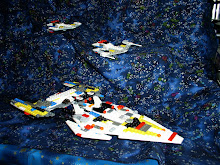Above your keyboard and mouse is that square bit of glass of tough plastic, either a cathode ray tube or a liquid crystal display. CRT’s are big, heavy, old, and usually pretty cheap if you can find one for sale still. LCD’s are thin, light, newer and depending on what you are looking, expensive.
Because CRTs are a slowly dying breed, I’m going to concentrate on LCDs. The vast majority of computers you might look at today will be equipped with LCD panels. The average ones range from 17 to 21 inches, with 19 being a good average. The largest regular use LCD that I’ve seen is 30 inches across! (This doesn’t include those monsters that can be used as TV’s.) They come in two forms: wide-screen and regular aspect ratios. Wide-screen is measured to be in the same ratio of height to width as a movie’s theater screen. Thus the term “wide-screen.” If you buy wide-screen DVDs, they will fill out the screen correctly without those black bars you usually see on the top and bottom of a regular screen. You can find DVDs in what’s called “full screen,” but you’ll be missing part of the scenes.
LCDs connect to your computer in one of two ways; via VGA cable (the small connector that goes to a blue plug on your computer), or DVI (a wider, white connector). You might even have both connectors on your video card. DVI (Digital Video Interface) is preferred, but most people VGA (Video Graphics Adapter) is fine. (I’ll try to not confuse things with HDMI, which is DVI, but carries sound.) Both plugs only go in one way, so if it doesn’t go in easily, make sure it’s the correct orientation.
Resolution is how many dots can be crammed on the screen. Two numbers are used to measure this, usually expressed like 1024x768. Some monitors can go higher, some lower. In the case of resolution, higher is better to a point. With higher resolutions, icons and text become smaller, but you can have more programs on the screen. You can use the Display Properties to make the icons larger. 1280x1024 is a good resolution for every day use with a 17 to 19 inch display. This resolution is not the same as printers, which I’ll cover in a later issue.
Few other things to look for in an LCD, like response time. This is the time in milliseconds that it takes for a pixel (picture element, or dot) to change from one color to another. 2 to 5ms are good. Slower times result in “ghosting,” where the image smears across the screen. Contrast (the difference between whitest white and blackest black) should be high, so that you see real white and real black, and all the colors between.
Some have extra features, like USB ports mounted on the sides and web cams in the top. These are nice features, like the USB ports that move up on the desk instead of the back of your computer. Another useful feature is the ability to raise and lower the screen as well as tilting up and down for a better viewing angle.


No comments:
Post a Comment